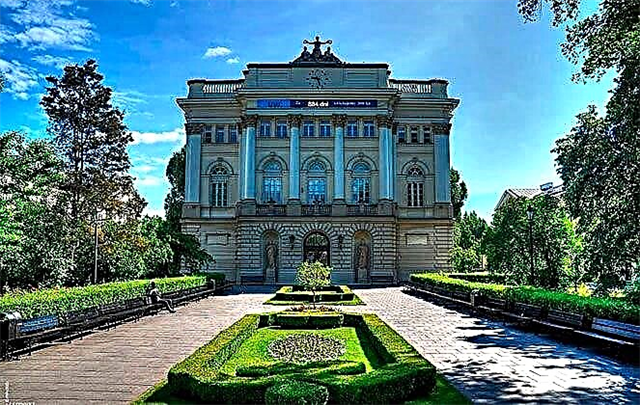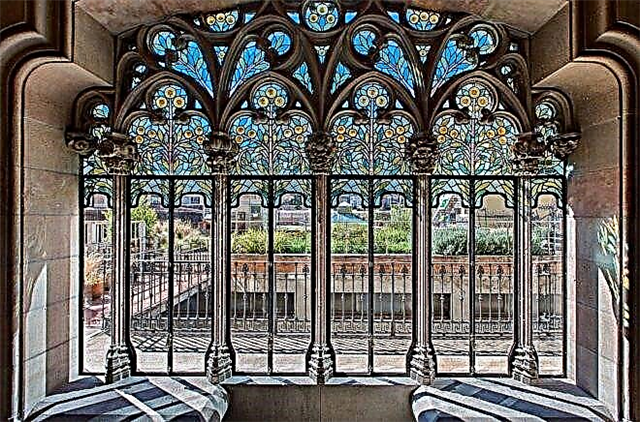In the Spanish city and also the capital of the region of Catalonia, there are many famous sights, but the Quarter of Discord has acquired a special attraction and fame among tourists. The area is famous for its modernist buildings contrasting with each other. One of the most interesting and entertaining of them is Casa Amatller, whose appearance is famous for its unusualness far beyond the borders of Spain. Many travelers come to the country for sightseeing, including the must-see House of Amalie in Barcelona.

A little about the history of the House of Amalle in Barcelona
The building was built in 1875, but at that time it was not particularly unique and has not yet caused such a loud stir. In 1898, an event happened that became a key one in the history of the building - it was bought by the pastry chef Antonio Amalie.
The owner decided to change the building to his liking and involved the gifted architect Josepe (in some historical sources, there is a variation of Josepe) Puig i Cadafalca for the reconstruction. According to his project, the house was redesigned between 1898 and 1900 and eventually acquired the look that we have the pleasure to observe today.
The Amalle House in Barcelona has become a real masterpiece that harmoniously combines elements of Neo-Gothic, Moorish and Art Nouveau. The sight of the attraction owes not only to the author of the project, but also to a large group of masters of art, applied art, who painstakingly worked on the aesthetic appearance and internal redevelopment. Since the beginning of the 20th century, this magnificent building has been impressing guests of Barcelona with its grace.
76 years after the completion of the reconstruction, by royal decree, the House of Amalje was proclaimed a monument of particular national importance and value.
The name of the attraction in Catalan sounds like Casa Amatller, which is the reason for a common mistake in translation into Russian. You can find an erroneous version that sounds like "House of Amatlier", but there is only one correct spelling and pronunciation - "Amalier".
Architectural features of the structure
Amalie's house has a completely unusual interior and exterior design. The first thing that immediately catches the eye and attracts attention is the pediment in the form of huge steps, which bears the features of the Dutch Gothic. The window openings of the upper floors are similar in motives to the Spanish Gothic.
The building is distinguished by the delicacy and sophistication of the exterior, which is especially noticeable in the gallery of the fourth floor, on which columns with filigree capitals flaunt. In the decoration of the facade wall, pink and sandy tones prevail, which indicate the type of activity of the owner, because they remind of a variety of bright sweets and delicacies.
The main entrance is decorated with numerous sculptural statues, which reveal biblical themes. On them you can recognize Saint George fighting a dragon. A different theme, which is traced in the sculptures, reflects medieval traditions and legends. Above are panels showing various trends in art, in particular, focusing on painting and music.

The main sculptural image, which is located directly above the entrance, shows an allegorically veiled portrait of the owner of the house.
Pay attention to the wrought iron balconies with curls and original lanterns.
Amalie's house had two entrances, the second of them - very high and wide, intended so that a harnessed carriage could freely enter the lobby.
The lobby is decorated in a Catalan Art Nouveau style, which can be traced in such characteristic features as the combination of stone, wood and iron details. The walls of the room are decorated with multi-colored tiles. The patio has stained glass windows that add a special twist.
At the moment, within the walls of the House of Amalje, the upper floors are occupied by the Institute of Spanish Art and the library, free admission is not allowed there. However, you can visit the museum located on the ground floor. In this part of the House, you can admire the decorations, examine interior items and paintings, paying special attention to the products made of Roman glass.
Tourist information
The Amalie House Museum is open to tourists on weekdays from Monday to Friday. The working hours of the attraction are from 11.00 to 19.00. The tour is only possible as part of a group (maximum 12 people), accompanied by a guide. The duration of the excursion is about 1 hour.
The tour in English falls at 11.00. The choice is not limited to this language only, visitors can also book a guided tour in Catalan, Spanish or French.
In order to be able to visit the Amalie House, you must follow certain rules. You cannot enter the room with an umbrella and a backpack. Women should note that stiletto heels are prohibited. You are allowed to take photos without a flash and you cannot use a selfie stick.
It is more convenient to order tickets in advance on the website of the House of Amalie. It is also possible to purchase a ticket in the museum lobby, if they are still on sale.
Tickets are sold out very quickly, due to the high popularity of the attraction.
An hour-long tour, which includes a guide and a delicious hot chocolate, costs 24 euros.
The price of a reduced ticket is 21.60 euros, for children (for children from 7 to 12 years old) - 12 euros, children under 7 years old can visit the Amalje House free of charge.
Famous houses nearby
Amalie's house is located in the Quarter of Discord, or, as it is also called, the Quarter of Discord. This small quarter of Barcelona is replete with unusual buildings. In addition to the already mentioned attraction, Casa Batlló and Casa Lleo y Morera are located in this area. All three buildings stand side-by-side, each of them is beautiful, but has its own special features.
Casa Batlló is the creation of the genius architect Antoni Gaudi, who, while reconstructing the building, radically changed it.

Locals call it the House of Bones, because its appearance vaguely resembles a skeleton. This building is distinguished by an extraordinary design and relief, combining together plant and animal forms, embodied in hewn stone.
House Lleo y Morera is another luxurious building in the Eixample district, considered one of the finest examples of Catalan Art Nouveau. It belongs to the hand of the master architect Luis Domenech y Montaner. This house surprises with its external fragility and magnificent interior decoration. The most remarkable thing is that it combines richness and variety of forms, sculptural ornaments and floral motifs.
How to get to the House of Amalja
The attraction is located at: Passeig de Gràcia, 41. To get to the House of Amalle in Barcelona, you can take the metro, choosing lines L2, L3 or L4. The station where you need to get off has a name consonant with the name of the street - Passeig de Gracia. Another option is to take any of the buses numbered 7, 16, 17, 22, 24, 28.
Finally
If you have a chance to visit Barcelona, be sure to visit the Quarter of Discord, where the most stylistically extraordinary buildings, renowned throughout the world, are located. Particular attention should be paid to the House of Amalja, where, in addition to visiting the museum tour, you can taste a cup of hot chocolate according to the original recipe of the owner-confectioner.











